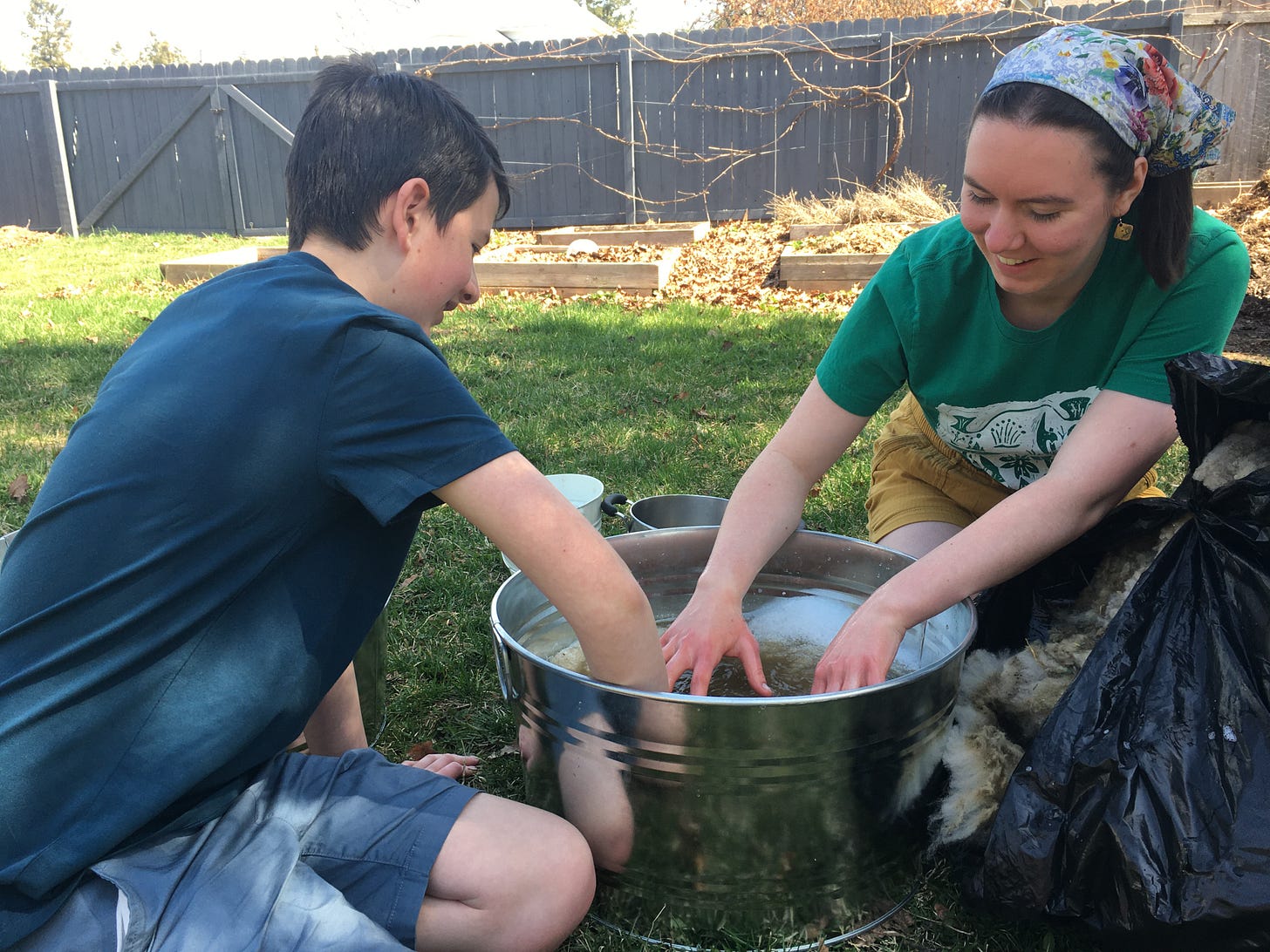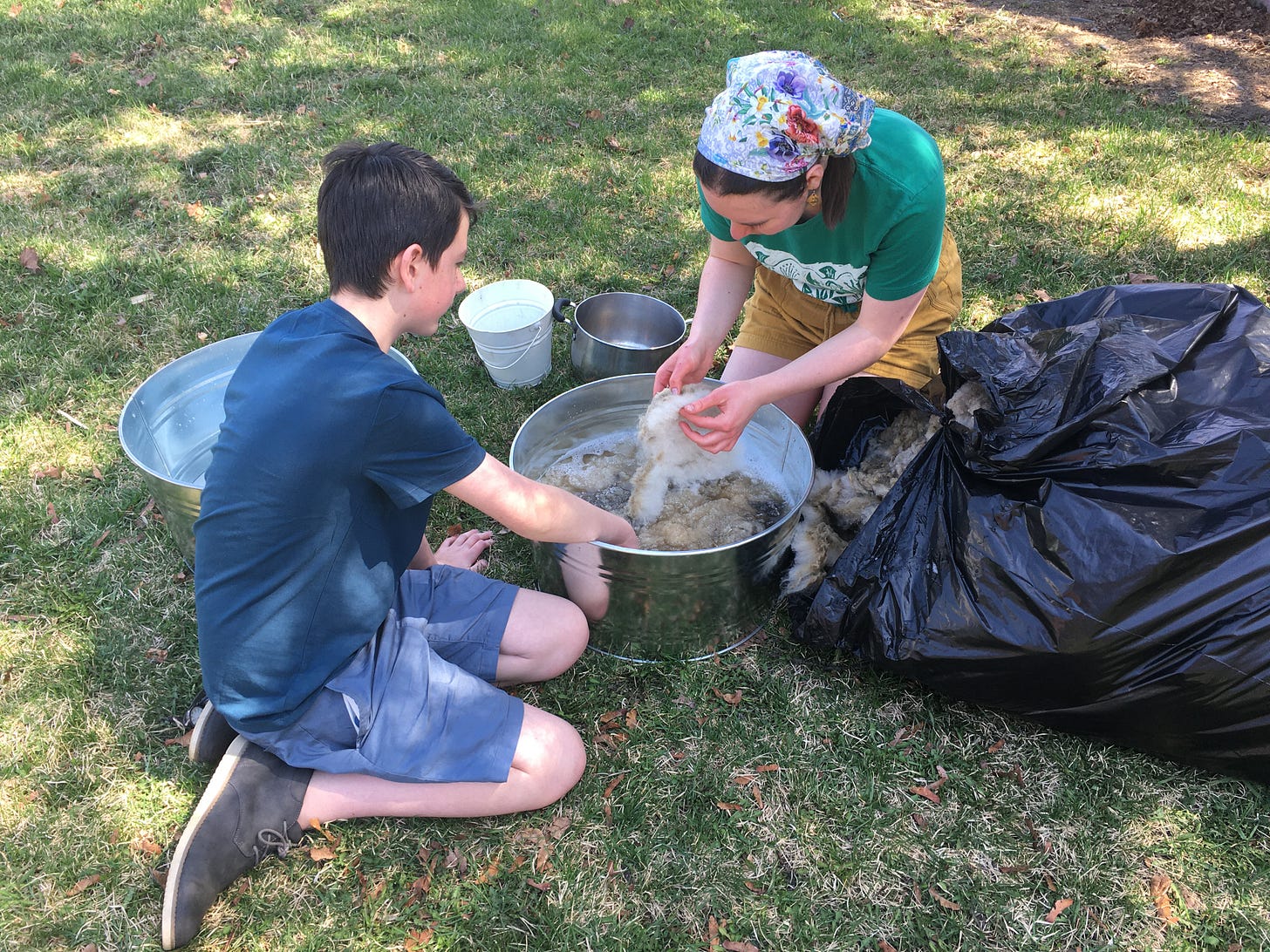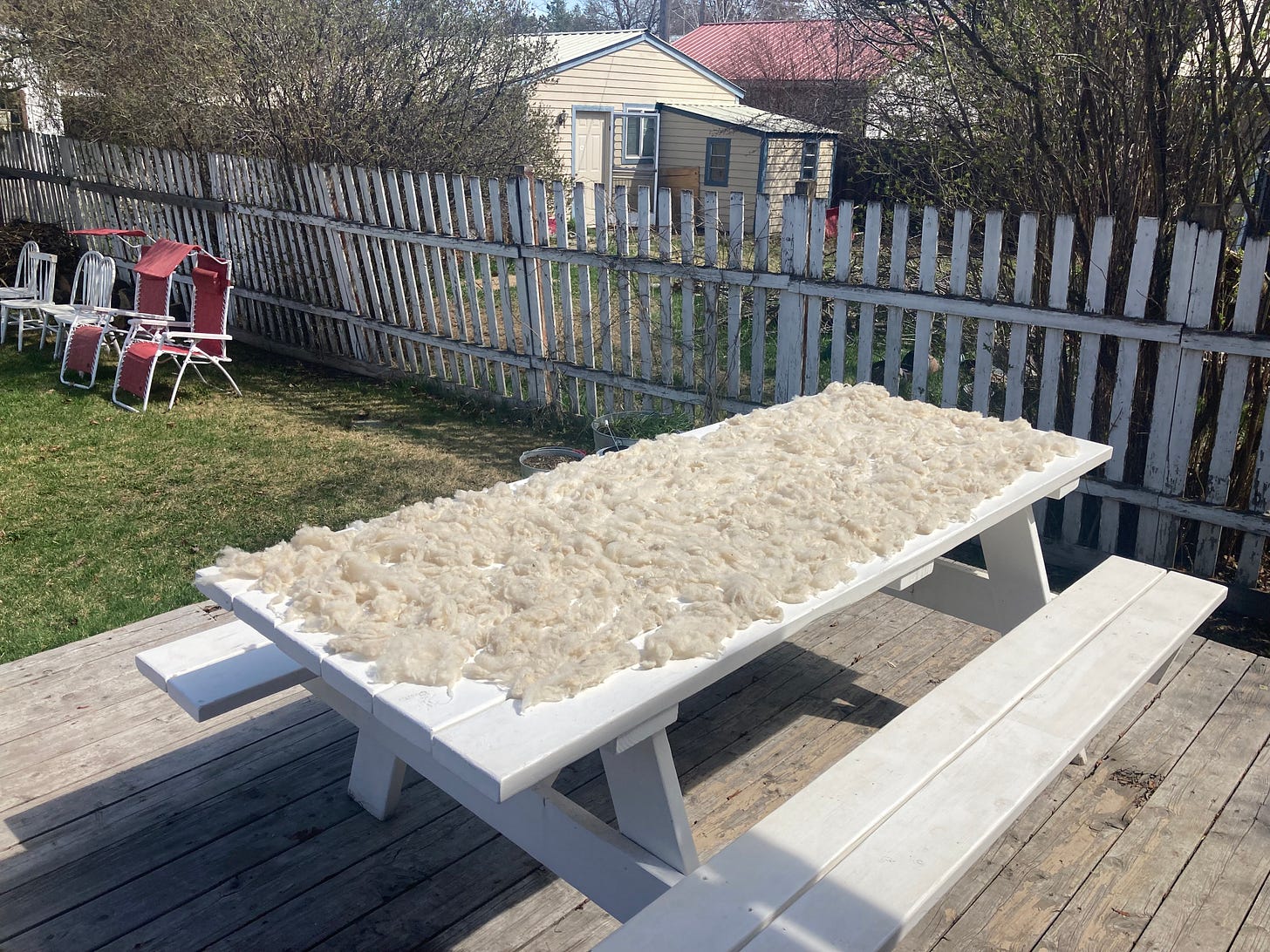Wool and Play(s) 🐑
“She who waits for the perfect moment to act will never make a turn at a busy intersection.”
—Agatha Swanburne
Backyard Wool
You may recall in Woolgathering Animatronic Cryptids, I shared a few resources on processing raw wool. That included this documentary:
(“Meanwhile, we are going to eat some garlic bread and a piece of bacon, and we will have a drink so the cold does not get in our hands.”)
That week I had been given two giant black garbage bags stuffed with raw wool. It was early March in Montana. Feet of snow across the land.
No way to wash and then dry a lot of wool, especially not outdoors in the sunshine.
☀ Saturday was 75 degrees and sunny: finally, we washed some wool!



“Being in the picture collection and exposed to that much begins to help me think really laterally. And I do that until I begin to sort of center on a world and on a vibe, spiritually, for the world of the play that feels hot. And for me, that hotness means it is nice to look at, and thematically rich, and then on a very prosaic level can function the way I need that play or musical to function.”
—Rachel Chavkin #
How to Make a Musical
For future reference—some gleaning over the past months:
On a practical level: The Triggering Town by Richard Hugo.
To the people in my house over Christmas break who had to hear me complain about right now not having what Austin Kleon calls a “scenius”—well, thank you for bearing with me.
There are a lot of destructive myths about creativity, but one of the most dangerous is the “lone genius” myth: An individual with superhuman talents appears out of nowhere at certain points in history, free of influences or precedent, with a direct connection to God or The Muse. When inspiration comes, it strikes like a lightning bolt, a lightbulb switches on in his head, and then he spends the rest of his time toiling away at his studio, shaping this idea into a finished masterpiece that he releases into the world to great fanfare. If you believe in the lone genius myth, creativity is an antisocial act, performed by only a few great figures—mostly dead men with names like Mozart, Einstein, or Picasso. The rest of us are left to stand around and gawk in awe at their achievements.
There’s a healthier way of thinking about creativity that the musician Brian Eno refers to as a “scenius.” Under this model, great ideas are often birthed by a group of creative individuals—artists, curators, thinkers, theorists, and other tastemakers—who make up an “ecology of talent.” If you look back closely at history, many of the people who we think of as lone geniuses were actually part of “a whole scene of people who were supporting each other, looking at each other’s work, copying from each other, stealing ideas, and contributing ideas.” Scenius doesn’t take away from the achievements of those great individuals; it just acknowledges that good work isn’t created in a vacuum, and that creativity is always, in some sense, a collaboration, the result of a mind connected to other minds.
—Austin Kleon, Show Your Work!
But really. Imagine being around a bunch of self-motivated young people/artists who just make their own work consistently and have different talents they are honing and who challenge and are challenged and collaborate on each others’ projects, who want to learn.
Where are they?
But that’s a whole different angle.
This spring the theme has been the escapism of creation and play.
“I think like all things it took a while to refine and learn. I think that the most useful part for me was that I never had a goal in mind […] so when I started writing it was just totally for me and in order to, like, understand myself and make something that I liked, and make something that I’m proud of.
“And also because I loved other artists and other artists made me feel the way you were describing, and I wanted so badly to make that for myself and feel that way from something I’ve made, for me, really.”
—Dodie #
4 Things from This Week:
Dandelions?! Green trees and dark green grass and pink and blue skies at dawn ~ springtime 🌿🌷☀
William Morris: A Life for Our Time ~ by Fiona MacCarthy
Monster + pastel 1920s circus costumes ~ all kinds of fun ideas
Beasts of the Southern Wild ~ movie night
Quote: 🏹📜🌻
“Glory be to God for dappled things –
For skies of couple-colour as a brinded cow;
For rose-moles all in stipple upon trout that swim;
Fresh-firecoal chestnut-falls; finches’ wings;
Landscape plotted and pieced – fold, fallow, and plough;
And all trades, their gear and tackle and trim.”
—Gerard Manley Hopkins, Poems and Prose







